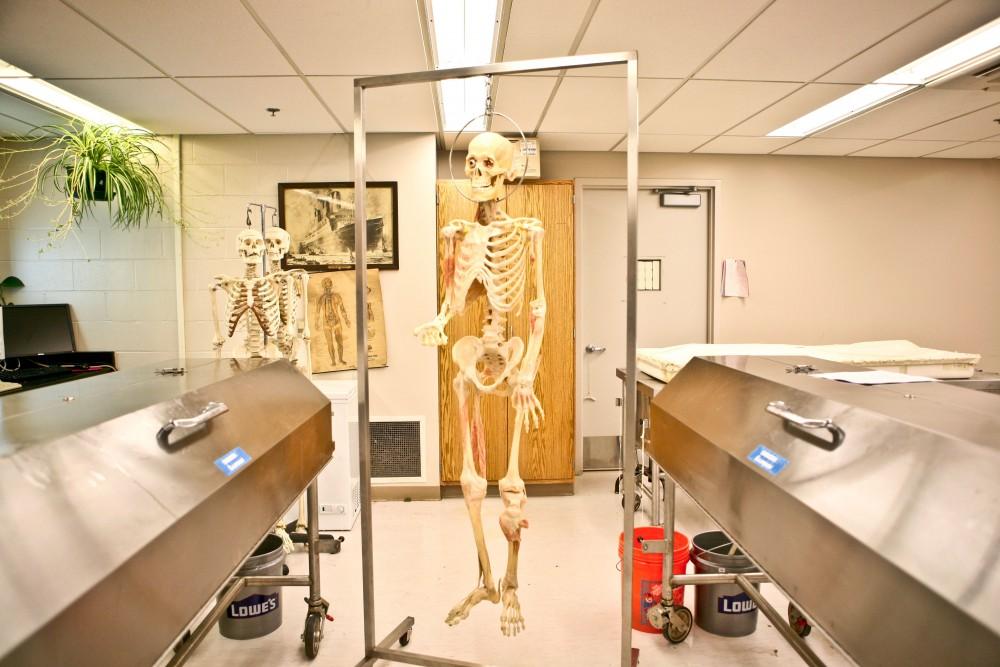GV cadaver collection enables hands-on learning

GVL / Eric Coulter Grand Valley State University’s Plastinate from Guben used in upper level anatomy classes.
Feb 2, 2012
For most, the thought of mingling with the deceased is the stuff of nightmares, but for many students in medical or health-related graduate programs at Grand Valley State University, cadaver labs are part of everyday studies.
Timothy Strickler, professor of biomedical sciences, said the anatomy labs have expanded since he arrived at GVSU in 1980, when there were only two cadavers in the anatomy lab and students dissected cats in their introductory-level anatomy courses.
“I began to increase the number of cadavers in 1980, and worked them into the labs to replace the cats,” Strickler said.
He said GVSU receives one to two “permanently donated” cadavers each year from the University of Michigan and eight to 10 cadavers each year from Michigan State University. Including delivery and pickup, he said the cost of each cadaver from MSU totals around $1,300.
Dawn Richiert, BMS professor, said some other institutions offer cadaver labs at an undergraduate level, but the labs only have a minimal amount of cadavers, or only offer sections of bodies for teaching purposes. However, GVSU undergraduates study from complete cadavers.
“Grand Valley students are lucky, because it is so unnatural for undergraduates to be (studying in) graduate-level programs,” said Justin Adams, assistant professor of BMS.
Adams said that the biggest advantage of students learning from cadavers is that no two humans have the same exact anatomical structures, and there are subtle differences inside all bodies. He also said cadavers can help students to get a better understanding of what went wrong inside the body by examining complete cadavers.
“We have a lot of student athletes with athletic training majors, exercise science, physical therapy and kinesiology who have also have hurt themselves, or have family members who have had cancer, diabetes or some chronic ailment,” he said.
About 800 students take an anatomy class involving cadaver labs each semester, with about 20 students per class and four to five students per cadaver, Adams said.
Richiert said the cadavers arrive in the winter and are dissected by students in BMS 460 throughout the entire semester.
“Michigan State pumps a fixation solution into them to keep them from deteriorating,” she said, adding that the solution is different than the embalming fluid used in funeral homes.
The bodies are then used in BMS 461 in the following fall semester. After that, the cadavers are used for lower-level classes.
“(The bodies) are kept between a year and a half to two years,” Richiert said. Their remains are then returned to MSU, where they are cremated. Ashes are either sent back to families or commemorated at a Catholic Mass that MSU holds at the end of the semester.
Strickler said GVSU also uses plastinated human specimens in all of its BMS anatomy courses, including upper-level ones. The university receives samples from the Von Hagens Plastination Facility in Guben, Germany.
“The amount we spend on plastinates varies from year to year, but since the initial order in 2009 we have spent about $100,000,” he said. “The plastinated specimens have proven to be very durable, and should last for many decades of careful use.”






















